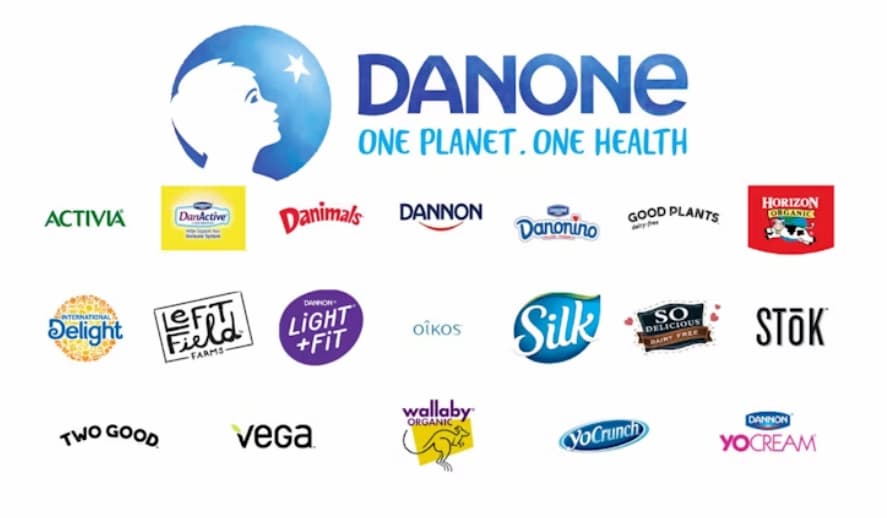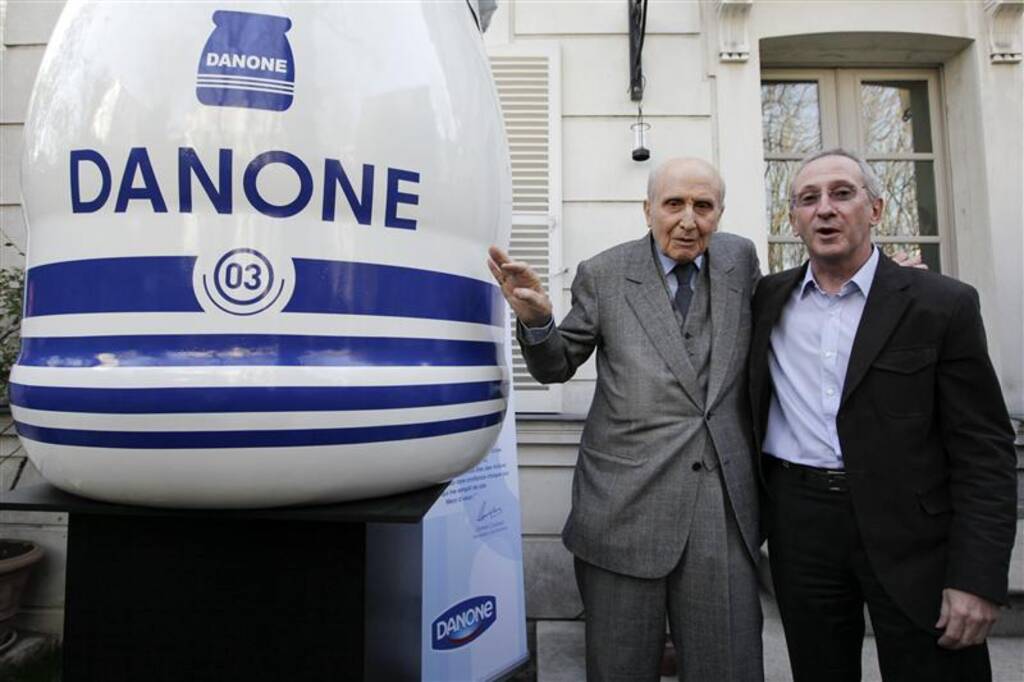Early Life and Origins
Daniel Carasso, born on December 16, 1905, in Thessaloniki, Greece, hailed from a Sephardic Jewish family that had settled in Greece four centuries earlier after being expelled from Spain during the Spanish Inquisition. This rich cultural heritage deeply influenced Daniel’s life and the journey that would lead him to revolutionize the yogurt industry. In 1916, Isaac Carasso, Daniel’s father, relocated the family to Barcelona, Spain. There, he noticed a high incidence of intestinal disorders among children, sparking an idea that would later transform into the globally renowned Danone brand.

The Birth of Danone
Inspired by the pioneering research of Russian microbiologist Élie Metchnikoff, Isaac Carasso sought to combat these health issues. Metchnikoff believed that lactic-acid bacilli, found in yogurt and sour milk, could extend human life by promoting digestive health. Utilizing bacterial cultures from the Pasteur Institute in Paris, Isaac began producing yogurt in Barcelona in 1919. He named his product Danone, after his son Daniel’s Catalan nickname, “Danon,” meaning “Danny.”
Initially, Danone yogurt was marketed as a health food and was sold exclusively through pharmacies. This strategic positioning capitalized on its health benefits and helped build its reputation as a beneficial dairy product that did not spoil easily, especially in warmer climates. This gradually helped Danone find favor beyond a niche market of health enthusiasts, setting the stage for broader acceptance.
Expansion to France
In 1923, Daniel Carasso pursued higher education in business at a school in Marseille. To deepen his understanding of yogurt production, he also took a course in bacteriology at the Pasteur Institute. By 1929, armed with this knowledge and a vision, Daniel expanded Danone into France. Despite the onset of the Great Depression, his efforts bore fruit as the French market embraced this novel dairy product. His passion and perseverance laid the groundwork for what would become a global dairy empire.
World War II and the American Dream
The outbreak of World War II and the subsequent Nazi occupation of France forced Daniel to flee to the United States in 1941. In America, he partnered with family friends Joe and Juan Metzger, who helped him purchase Oxy-Gala, a small Greek yogurt company in the Bronx. Rebranding the product as Dannon, the team began producing unflavored yogurt in glass bottles, which sold for 11 cents each, with a 3-cent deposit.
Initially, sales were modest, with daily revenues of just $20. However, a pivotal change occurred in 1947 when they decided to add strawberry jam to their yogurt, catering to American tastes. This innovation significantly boosted sales, transforming Dannon yogurt from a niche health food to a mainstream snack and dessert. The addition of fruit flavors was a game-changer, propelling Dannon to national recognition and setting a trend that continues to this day.
Post-War Expansion and Global Success
After World War II, Daniel Carasso returned to Europe to rebuild and expand Danone in Spain and France. His return marked the beginning of an aggressive growth strategy that saw the establishment of Danone plants in various countries and numerous mergers with other food companies. This period of expansion was characterized by innovation, strategic acquisitions, and a relentless drive to globalize the brand.
In 1967, Danone acquired the fresh-cheese company Gervais, a move that diversified its product offerings and solidified its presence in the dairy industry. The merger with BSN in 1973, a leading French bottle maker seeking to diversify into food products, was another significant milestone. The newly formed company, BSN-Gervais Danone, leveraged its combined resources to scale up production and distribution, ensuring Danone products reached a broader audience.
In 1981, the company reacquired Dannon from Beatrice Foods, reuniting its European and American operations. Two years later, BSN-Gervais Danone rebranded as Groupe Danone, signaling its evolution into a global food conglomerate. Under Daniel Carasso’s leadership, Groupe Danone became one of France’s largest food companies, with a diverse portfolio that included dairy products, bottled water, and baby foods.
Danone’s Global Footprint

By 2008, Groupe Danone’s revenue had soared to nearly $19 billion. The company ranked first worldwide in sales of fresh dairy products, a testament to its dominance in the yogurt market. Danone also held a strong position in the bottled water and baby food sectors, reflecting its broad market reach and diverse product range.
Danone’s success can be attributed to several key factors:
- Innovation in Product Development: Danone continually introduced new flavors and products, catering to varying tastes and preferences across different markets. This innovation kept the brand relevant and appealing to consumers worldwide.
- Strategic Acquisitions and Partnerships: By acquiring and partnering with other food companies, Danone expanded its product offerings and market reach. These strategic moves allowed the company to enter new markets and consolidate its position in existing ones.
- Commitment to Health and Nutrition: From its inception, Danone positioned itself as a health-oriented brand. This focus resonated with health-conscious consumers and differentiated Danone from its competitors.
- Global Marketing and Branding: Danone’s consistent and effective marketing campaigns helped build a strong brand identity. The company’s efforts to localize its products and marketing strategies ensured relevance and appeal in diverse markets.
A Legacy of Innovation and Vision
Daniel Carasso’s vision of making Danone a global brand was realized through his relentless dedication and innovative strategies. His ability to foresee trends and adapt to changing market dynamics was instrumental in Danone’s growth. He lived to see his dream come true, celebrating Danone’s 90th anniversary in April 2009.
Throughout his life, Daniel Carasso remained actively involved in the business, always pushing for innovation and expansion. His contributions to the food industry extended beyond yogurt, as he played a pivotal role in shaping modern dairy consumption patterns.
Interesting Facts About Danone
- Global Presence: Today, Danone operates in over 120 countries, making it one of the most recognized dairy brands worldwide.
- Product Range: Danone’s product portfolio includes not just yogurt but also bottled water, baby food, medical nutrition products, and plant-based foods.
- Sustainability Efforts: Danone is committed to sustainability, aiming to become a certified B Corporation by 2025. The company focuses on reducing its environmental impact, promoting sustainable agriculture, and improving health through food.
- Revenue Growth: By 2023, Danone’s annual revenue had grown significantly, reflecting its successful expansion and adaptation to consumer trends. The company’s revenue in 2020 was approximately €23.6 billion, showcasing its continued growth and market dominance.
- Innovation Hubs: Danone has established several innovation centers worldwide, focusing on research and development to create new products and improve existing ones. These centers are crucial for staying ahead of market trends and consumer preferences.
The End of an Era
On May 17, 2009, Daniel Carasso passed away at his home in Paris at the age of 103. His death marked the end of an era for Danone, but his legacy lives on. He left behind a thriving business and a legacy that transformed yogurt from an obscure ethnic food into an international staple.
Daniel Carasso is survived by his daughter, Marina Nahmias, four grandchildren, and six great-grandchildren. His life and work remain a testament to the impact of innovation, perseverance, and vision in the food industry. Daniel Carasso’s story is not just about the success of a brand but also about the profound impact one individual’s vision can have on global food consumption patterns.
The Journey of Daniel Carasso
Daniel Carasso’s journey from Thessaloniki to global recognition is a remarkable tale of innovation, resilience, and foresight. His efforts turned a simple dairy product into a household name, changing the way people around the world consume yogurt. Today, Danone stands as a testament to his vision, continuing to lead the dairy industry while honoring its founder’s legacy of health, nutrition, and sustainability.
Read about more Notable Sephardic Jews.









Ohr HaChaim Yomi – Vayikra